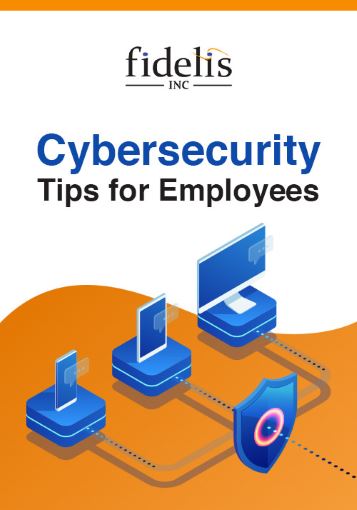Ransomware is an increasingly dangerous threat to businesses today. In fact, according to Datto, 20% of ransomware victims in 2019 were small- and medium-sized businesses (SMBs). And as ransomware becomes more sophisticated, attacks will likely be more prevalent.
Why do businesses keep becoming ransomware victims?
Despite their awareness about ransomware, many SMBs still believe that they are not the target of cybercriminals, so they don’t bother investing in proper security solutions. Some employees may also not take ransomware seriously.
Businesses hit by ransomware often end up paying the ransom because they think it’s the easiest way to ensure business continuity and reduce downtime. However, paying only encourages cybercriminals to launch more sophisticated ransomware attacks, and there is no guarantee that paying the ransom will result in your data being restored.
How can you protect your business from ransomware?
As dangerous as ransomware can be, your business can take a proactive approach against it. Here are some tips you can follow:
1. Create offline backups
Certain ransomware variants can make a victim’s system inoperable, rendering attempts to recover from a volume snapshot or a cloud backup futile. Many ransomware variants are no also targeting common backup software to encrypt, delete, or disable your backups prior to deploying their ransomware payloads to your network.
To mitigate the risk of losing your sensitive data, keep copies of your files in backups that are not directly accessible from main systems. This can be as easy as backing up to external storage solutions such external hard drives, tapes, or DVDs and keeping a rotation of disconnected the backup media that cannot be encrypted by a ransomware attack. This will make it easier for you to recover your files in case the original copies get compromised.
Fidelis can provide recommendations for cost-effective business continuity and backup solutions that backup data to a local appliance (not accessible from your servers or PCs), automatically replicates the data to an off-site location, and performs automated validation of your backups to ensure that the backups will be usable if needed.
2. Educate your employees on ransomware prevention
While cybersecurity solutions can protect your business from ransomware attacks, it only takes one mistake from your employees for your data to become compromised.
Teach your staff what ransomware is and how it infects systems. Train them on cybersecurity best practices such as refraining from opening unsolicited emails and suspicious links.
Provide your staff with regular ongoing security awareness training and periodically test your staff by sending simulated phishing attempts to see how your staff will react to common threats found in email..
3. Invest in multilayered security
Investing in multiple layers of cybersecurity can prevent future ransomware infections. You can design a security plan that uses the following strategies:
-
Assess your current security setup. Deploy antivirus software with proactive monitoring that can detect any malware in your system and block malicious online services.
-
Install an email protection solution. Ransomware is usually found in emails, so an email security solution is nonnegotiable. This should include a spam filter, phishing protection, data loss protection, and end-to-end data encryption, among others.
-
Deploy web content filtering solutions. Some cybercriminals use websites that appear to be legitimate to trick users into downloading malware. Web content filtering prevents users from accessing malicious websites and reduces the risk of malware infection.
-
Use an intrusion prevention system (IPS). An IPS inspects network traffic to identify vulnerabilities and prevent cybercriminals from exploiting them.
-
Invest in endpoint security. Ordinary antivirus solutions rely on ransomware identifiers, making them useless against variants that modify its code to evade detection. Endpoint security can detect and block ransomware as cybercriminals deploy them.
4. Keep your software up to date
Ransomware typically exploits software bugs in programs and operating systems. For instance, the WannaCry ransomware exploited a known software vulnerability in Windows called EternalBlue. Microsoft released a patch for those running a modern operating system, but not for older systems that got infected with the ransomware.
Regularly update all your software to make sure that vulnerabilities cannot be exploited to attack your system. This applies to security software as well, as definition updates prevent malware from infiltrating your IT infrastructure.
Ransomware attacks can cause serious damage to your IT infrastructure. At Fidelis, our managed security services monitor and maintain your systems to protect your data from cyberthreats and reduce risk to your organization. To learn more about how you can secure your network from ransomware and other malware, download our FREE eBook today.
Poor cybersecurity awareness could put your business at risk!
When it comes to cybersecurity, well-trained employees who can detect an online scam at first glance can be as strong as any antivirus software.



